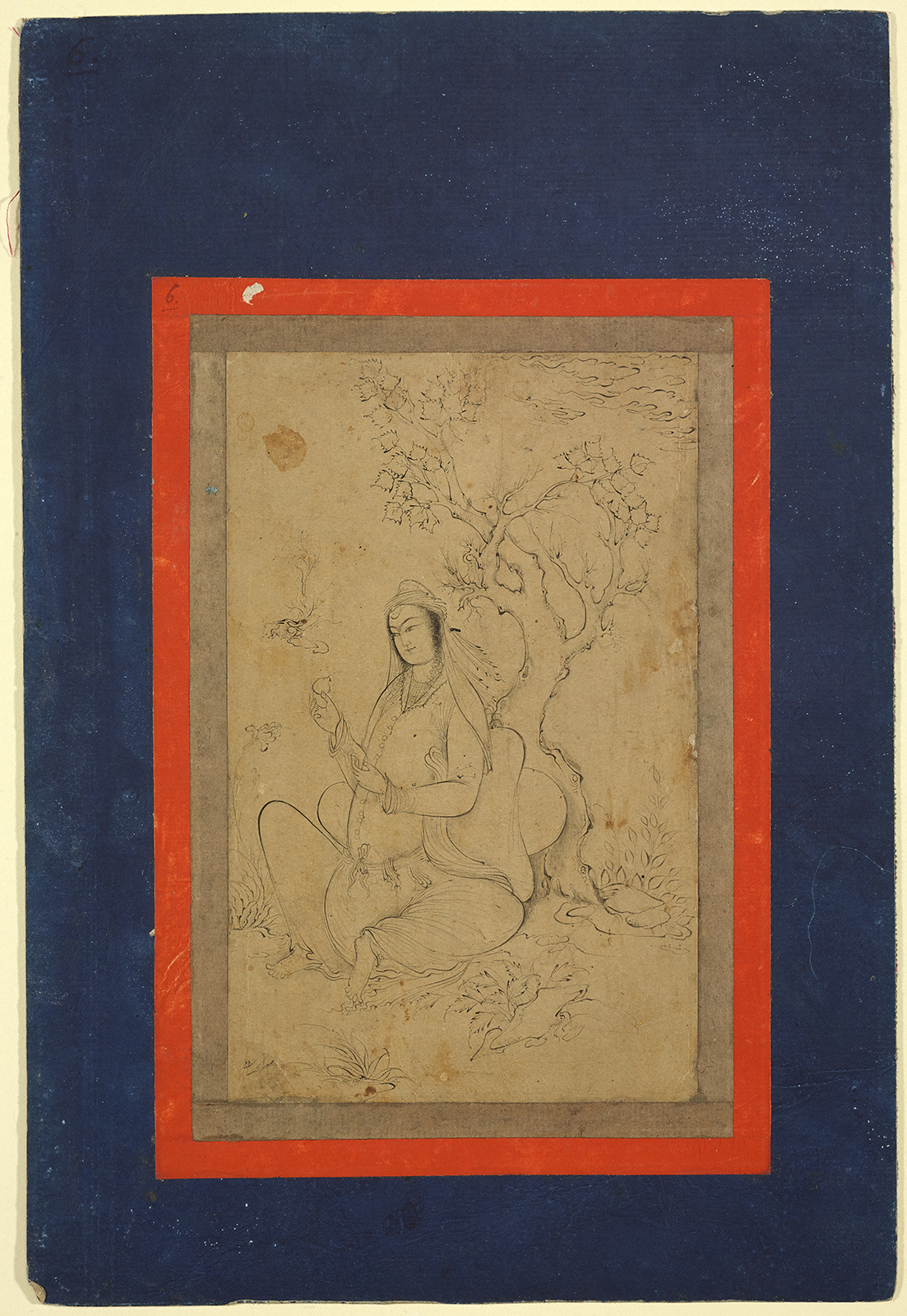Click on the image to zoom
A Lady Seated Under a Tree
- Accession Number:AKM440
- Place:Iran, Isfahan
- Dimensions:28.9 x 19.6 cm
- Date:1640–50
- Materials and Technique:ink on paper
This fine, tinted single-page drawing depicts a lady seated under a gnarled tree. The lady holds a pear in her right hand while she inspects an iris. The landscape is not an idyllic one; the gnarled tree, rocky landscape, leafy plants, and some wind-strewn clouds impart an air of melancholy. The drawing bears an inscription in the lower left corner. It is, however, difficult to identify as a signature, since it is partly erased. The drawing was once attached to an album folio with coloured borders. The subject matter and style chosen by this anonymous artist recall those of Reza-e ‘Abbasi (ca. 1565–1635).
Further Reading
Reza-e ‘Abbasi had an enormous impact on 17th-century artists. His drawings of daily life in nature—usually depicting a figure engaging in some activity while seated in a landscape—demonstrate his draftsmanship and superlative creativity. Such figures are often shown drinking wine from a cup or reading a book, and some even hold a flower. Drawings in which a man holds a pear or offers a pear are also myriad, especially in the works of his followers. However, as it is instead a woman who holds the pear in this drawing,[1] it is possible that its model was a 17th-century drawing attributed to Habiballah of Mashhad.[2]
A Lady Seated Under a Tree also shares stylistic similarities with other drawings in the Aga Khan Museum Collection, such as AKM435, AKM437, and AKM438. Parallels include the treatment of wrinkles in the headgear and clothing. In addition, the checkered undergarments here recall those depicted in AKM437. The artist’s unsubtle use of colour in this drawing and the black contours of the body make the work appear flat.
— Filiz Çakır Phillip
Notes
[1] Swietochowski and Babaie, 72, cat. 30; Abolala Soudavar, Art of the Persian Courts: Selections from the Art and History Trust Collection (New York: Rizzoli, 1992), 291, fig. 116; Robinson et al., L’orient d’un collectionneur, 154, 291, fig. 280.
[2] B.W. Robinson, Drawings of the Masters: Persian Drawings from the 14th Through the 19th Century (New York: Shorewood, 1965), 82, plate 50.
References
Phillip, Filiz Çakır. Enchanted lines: drawings from the Aga Khan Museum collection. 2014. ISBN: 9780991992874
Robinson, B.W. Drawings of the Masters: Persian Drawings from the 14th Through the 19th Century. New York: Shorewood, 1965. https://archive.org/details/persiandrawingsf00robi
Swietochowski, Marie Lukens, and Sussan Babaie. Persian Drawings in The Metropolitan Museum of Art. New York: The Metropolitan Museum of Art, 1989. ISBN: 9780870995644
Note: This online resource is reviewed and updated on an ongoing basis. We are committed to improving this information and will revise and update knowledge about this object as it becomes available.


